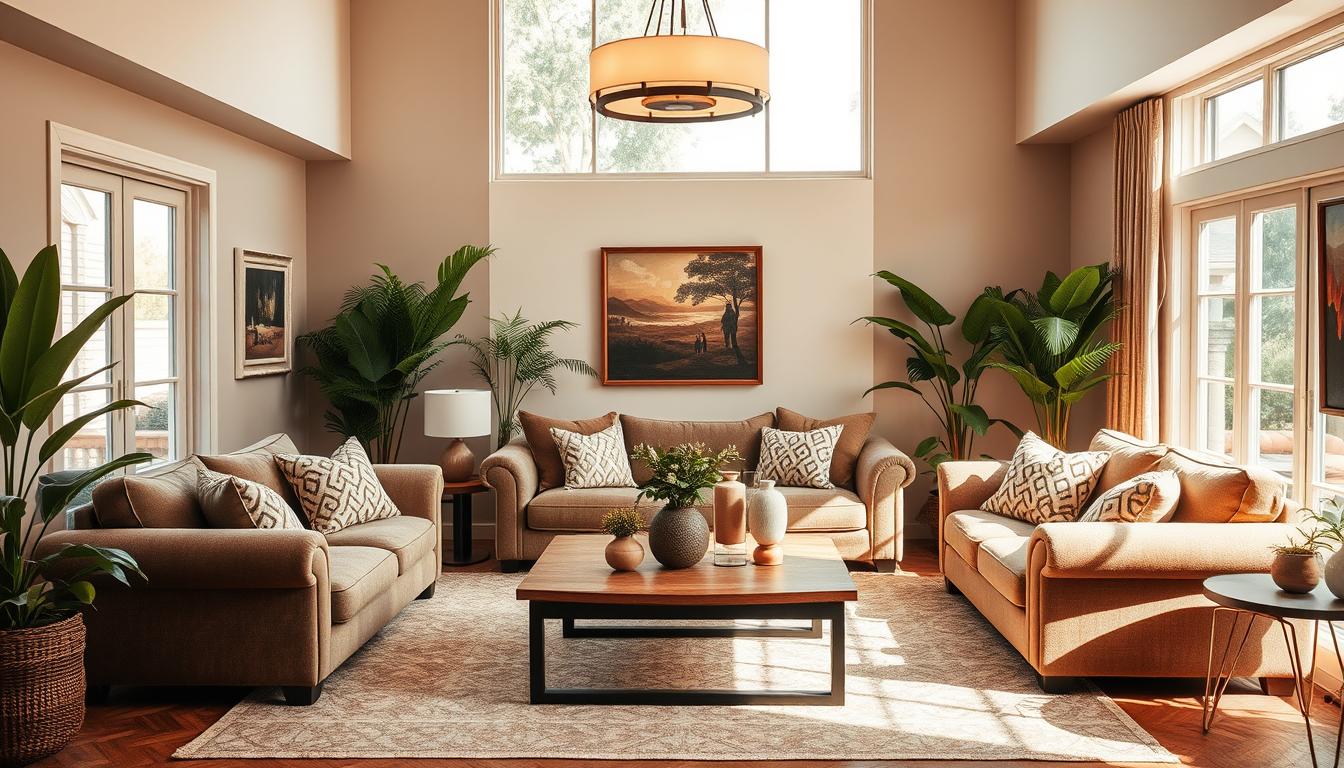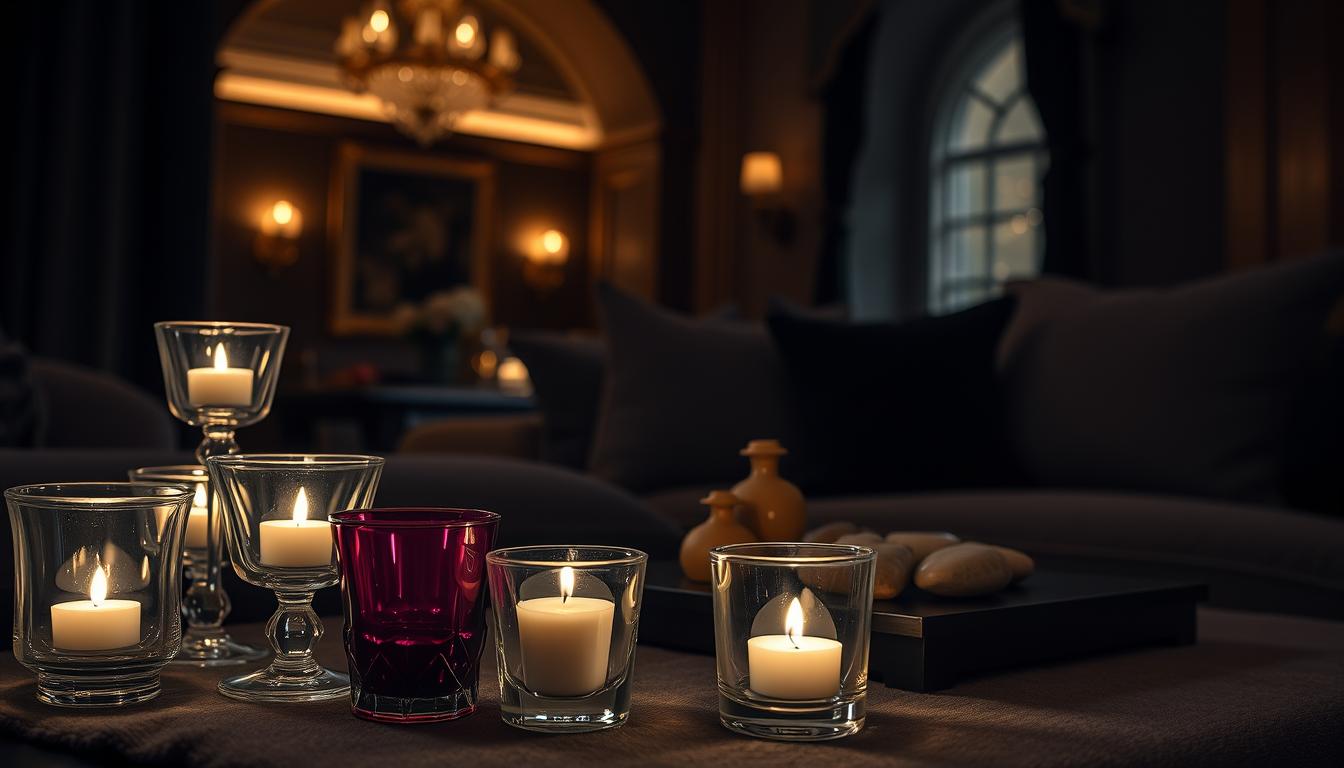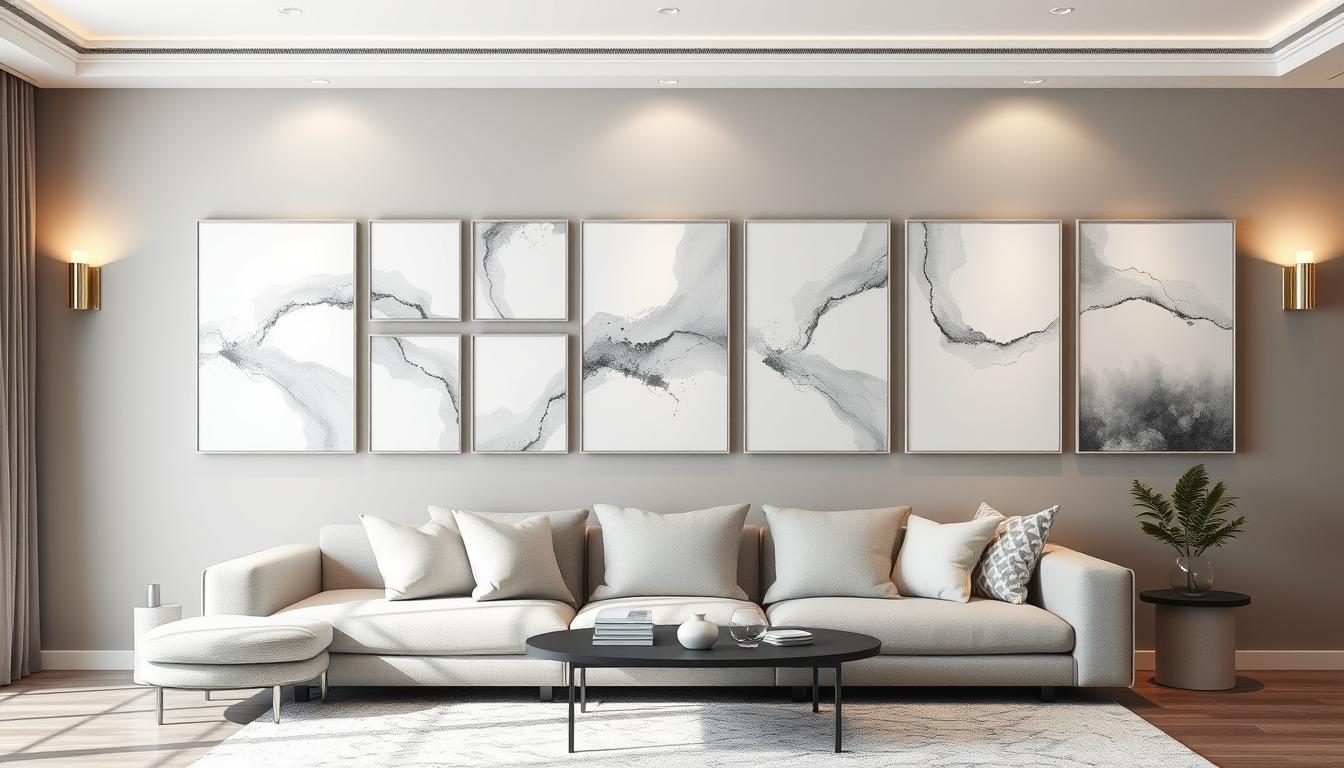Did you know a well-designed home can boost its value by up to 10%? With the right interior design ideas, you can turn your living space into a beautiful mirror of your style.
At our guide, we know how crucial it is to have a home that looks great and works well. That’s why we’re here to give you the newest home decor inspiration and expert tips to reach your goals.
Whether you want to redo your whole home or just one room, our guide has got you covered. We’ll show you the key parts of homes interiors. This will give you the knowledge and ideas to make your home look amazing.
Key Takeaways
- Discover the latest interior design trends
- Learn how to choose the perfect color palette for your home
- Explore expert tips for selecting furniture and decor
- Understand the importance of lighting in home design
- Get inspired by stunning home decor ideas
Understanding the Basics of Home Interiors
To make your home look great, you need to know the basics of interior design. A good home is not just pretty; it’s also comfy and works well. We’ll cover the basics to help you make a space that shows off your style.
Importance of Interior Design
Interior design turns a house into a home. It makes a space look good and work well. Good design can make your life better by making your home more comfy and fun.
For example, a well-designed kitchen makes cooking and hosting easier. It also affects how you feel, making your home a happier place. Plus, a stylish home can increase its value if you sell it.
Key Elements of Interior Design
Several key elements make up a well-designed space. These include:
- Balance: Getting different elements like color and texture to work together.
- Proportion: Making sure furniture fits the room’s size.
- Emphasis: Creating a main focus in the room.
- Unity: Keeping design elements consistent for a cohesive look.
- Contrast: Using different elements like light and dark to add interest.
| Element | Description | Example |
|---|---|---|
| Balance | Achieving harmony among different design elements. | Using a mix of heavy and light furniture. |
| Proportion | Ensuring furniture fits the scale of the room. | Choosing a sofa that fits the room’s dimensions. |
| Emphasis | Creating a focal point. | A statement piece of art or a bold color wall. |
Common Design Mistakes to Avoid
Even with the best plans, design mistakes can happen. Some common errors include:
- Overcrowding: Too much furniture can make a room feel cramped and cluttered.
- Poor Lighting: Not enough light can make a space feel dark and unwelcoming.
- Ignoring the Flow: Not thinking about how people move through the space can make it feel disjointed.
Knowing these basics and avoiding common mistakes can help you create a beautiful and functional home. Whether you want a modern or luxury look, balance is key.
Choosing the Right Color Palette
Color is key in interior design, shaping the mood and look of your home. The right colors can make your home stylish, showing off your taste and preferences.
Psychology of Colors in Design
Colors deeply affect our feelings and views. For example, blue brings calmness, while red sparks energy. Knowing how colors work can guide your color choices for your home.
Colors also change how we see a room’s size. Light colors make rooms seem bigger, while dark colors make them feel cozier.
Popular Color Schemes for Homes
Many color schemes can inspire your home’s design. Here are a few:
- Monochromatic: Using various shades of one color for a unified look.
- Complementary: Mixing colors opposite each other on the color wheel for contrast.
- Analogous: Choosing colors next to each other on the color wheel for harmony.
Each scheme has its benefits and fits different styles, from modern to traditional.
Tips for Selecting Colors
Here are some tips for picking colors:
| Tip | Description |
|---|---|
| Consider the Natural Light | The light in your room greatly affects color appearance. |
| Think About the Room’s Purpose | Colors should match the room’s use. Bedrooms need calm colors, while offices need energizing ones. |
| Test the Colors | Try colors with paint samples or online tools before deciding. |
By thinking about these points and understanding color psychology, you can make your home stylish and personal.
Furniture Selection and Arrangement
Finding the right furniture is key to interior design ideas that make your home look great. The right pieces can change a room, making it both useful and beautiful.
Finding the Perfect Pieces
In homes interiors, your furniture should show your style and fit the room’s purpose. For example, a comfy sofa is a must for the living room. A strong desk is needed for a home office.
To pick the best furniture, remember these tips:
- Measure your space well to make sure furniture fits right.
- Pick materials and finishes that last and are easy to clean.
- Think about the style you like, whether it’s modern, traditional, or a mix.
For more tips on designing your dream home, check out InteriorGrove for expert advice.
Space Planning Techniques
Good space planning is key to a harmonious and useful home. It’s about understanding how the space flows and how areas will be used.
Some important space planning techniques are:
- Make a floor plan to see how the layout will look.
- Make sure paths are clear for easy movement.
- Use a mix of big and small furniture to balance the space.
“Good design is all about making the complex simple.” – John Maeda
Balancing Functionality and Aesthetics
It’s important to balance how your furniture looks and works for home decor inspiration. Your furniture should look good and do its job well.
To get this balance, try these tips:
- Choose furniture that does more than one thing, like storage ottomans or coffee tables with storage.
- Use lighting to make the room look better and work better.
- Pick furniture with simple designs and less clutter to keep the space open.
By choosing and arranging your furniture wisely, you can make a home that’s both lovely and practical. It will show your style and meet your needs.
Lighting: Setting the Right Mood
The right lighting can change a space, making it cozy, modern, or luxurious. It’s not just about lighting up a room. It’s about creating a mood that shows your style and makes your home more useful.
Types of Lighting Fixtures
There are many lighting fixtures for different effects in your home. Ambient lighting lights up the whole room. Task lighting helps with activities like reading or cooking. Accent lighting highlights special features or areas.
As interior design experts, we suggest mixing these lights. This creates a layered lighting effect that adds depth and interest to a room.
Layering Light for Effect
Layering light means using different light sources for a nice effect. You can mix overhead lights with table lamps, floor lamps, or string lights. The goal is to balance the light so it’s not too harsh or too much.
“Layering light is an art that requires considering the room’s purpose, the furniture, and the overall aesthetic you want to achieve.” –
Energy-Efficient Lighting Options
In today’s world, energy-efficient lighting is key. LED bulbs use less energy and last longer than old bulbs. Smart lighting systems let you control your lights from anywhere and save energy.
- LED bulbs
- Smart lighting systems
- Energy-efficient fixtures
Using these energy-saving lights in your home helps the planet. It also keeps your living space stylish and useful.
Incorporating Textures and Patterns
Mixing textures and patterns can turn a simple space into a stylish, inviting place. By combining different elements, you add depth and interest. This makes your home feel more welcoming and personal.
Mixing Textures for Depth
Mixing textures adds complexity and interest to a room. You can use wood, metal, glass, and fabric together. For example, a leather sofa, a chunky rug, and a wooden coffee table create a layered look.
Here are some tips for mixing textures:
- Start with a main texture and add contrasting ones for interest.
- Balance smooth with rough textures to avoid overwhelming the space.
- Use a variety of textures in furniture, rugs, and accessories for a cohesive look.
Choosing Complementary Patterns
Patterns add a dynamic element to your design. It’s important to choose patterns that complement each other. Consider their scale, color, and style.
| Pattern Type | Description | Example |
|---|---|---|
| Geometric | Features geometric shapes like chevrons and hexagons. | Chevron patterned rug |
| Floral | Includes floral motifs and botanical prints. | Floral printed fabric |
| Abstract | Non-representational patterns that add visual interest. | Abstract art piece |
Tips for Layering Textures
Layering textures is key to a rich, engaging space. Here are some tips:
- Start with a base layer, like a rug or upholstered furniture.
- Add a secondary layer with throw blankets, pillows, or a statement piece.
- Finish with decorative accessories like vases, candles, or wall art.
By mixing textures and patterns and layering them, you create a stylish home decor. It reflects your personal style and makes your home welcoming and unique.
The Role of Accessories in Home Design
Accessories are key in home design, not just extras. They add personality and style, making our homes unique. They show off our tastes.
Integrating Decorative Accessories
Decorative accessories can make a room look better. Here are some tips to use them well:
- Choose accessories that match your furniture’s color and style.
- Use different textures and heights to add depth.
- Group similar items for a cohesive look.
For example, a vase, sculpture, and art can look great together on a console table.
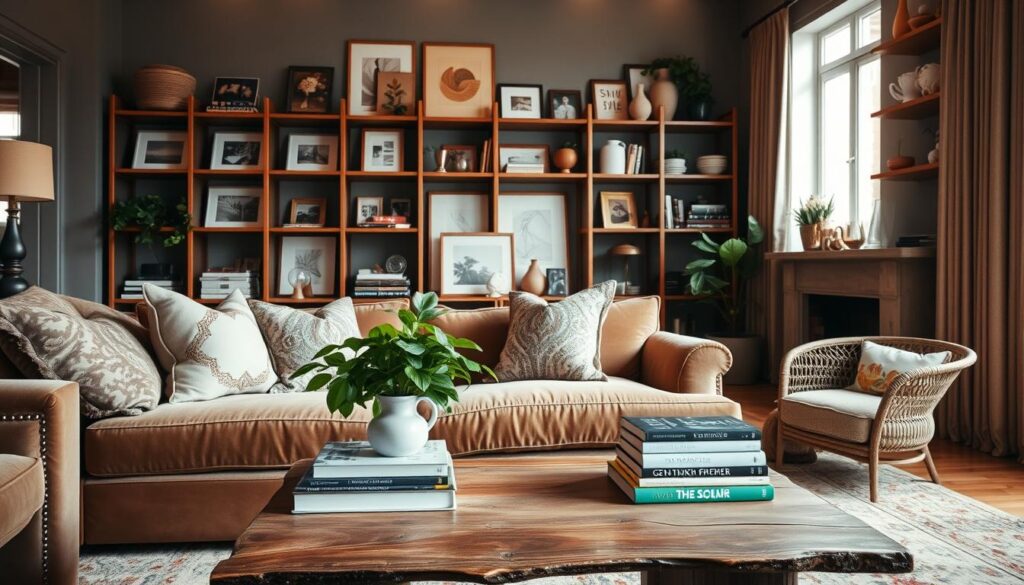
Functional vs. Decorative Pieces
It’s important to know the difference between functional and decorative pieces. Functional pieces, like storage ottomans, are practical. Decorative pieces, like vases, are for looks.
Mixing both types makes a space beautiful and useful. For example, a vase on a coffee table can add elegance.
Creating Focal Points in a Room
Focal points grab your attention and add interest. You can use a statement piece, a bold color, or a striking accessory.
- Choose a focal point that fits the room’s purpose.
- Use lighting to highlight it.
- Balance it with the rest of the decor.
By choosing accessories wisely, we can make our homes more beautiful and functional. They reflect our unique style and preferences.
Sustainable and Eco-Friendly Interiors
The world is moving towards a greener lifestyle, and homes are leading the way. Homeowners are now focusing on sustainable interiors. This shift makes homes not only eco-friendly but also more beautiful and useful.
Eco-friendly design is now a big deal, not just a trend. It’s about cutting down our environmental harm. By using green materials and saving energy, we make homes that are good for the planet and look great.
Benefits of Eco-Friendly Design
Eco-friendly design brings many perks, like using less energy and cleaner air inside. Choosing green materials and smart design cuts down our harm to the environment. Plus, these homes get more natural light and air, making them healthier.
Experts say, “Sustainable design is more than just green materials. It’s about making a whole system that’s good for people and the planet.”
“The green building movement is not just a trend, it’s a revolution in how we think about our homes and our impact on the planet.”
Sustainable Materials for Interiors
Choosing the right materials is key in green interior design. Go for recycled, recyclable, or sustainably harvested options. Bamboo flooring is a great choice because it’s renewable. Reclaimed wood adds charm and cuts down on waste.
Think about a material’s whole life cycle and its environmental impact. Making smart choices can greatly reduce our homes’ environmental harm.
Tips for a Green Home Makeover
Turning your home green is easy with a few steps. First, check your home and see where you can improve, like saving energy and reducing waste.
- Choose energy-saving appliances and lights.
- Use eco-friendly furniture and decor.
- Boost insulation to cut down on heating and cooling.
- Add plants to clean the air.
By following these tips, we can make homes that are stylish, comfy, and kind to the earth.
Trends in Home Interiors for 2023
In 2023, home interiors are all about innovation and making spaces personal. We’re seeing a mix of style, sustainability, and technology. This is changing how we design our homes.
Current Design Trends to Watch
Today’s design trends focus on making homes sustainable and comfy. Key trends include:
- Eco-Friendly Materials: Using green materials in decor is big.
- Smart Home Technology: Adding tech to make homes more efficient.
- Bold Colors and Patterns: Using bright colors and patterns to add flair.
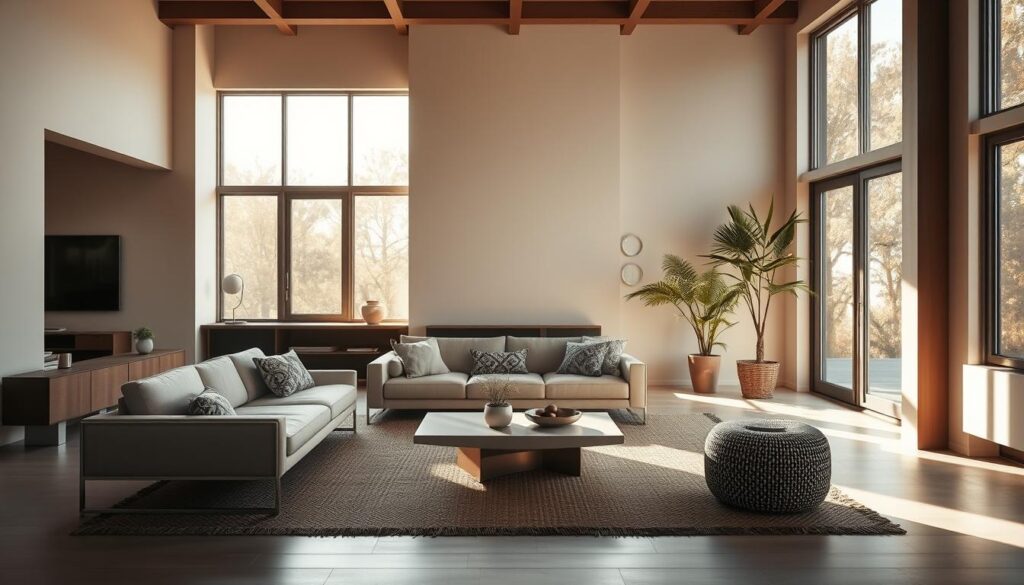
How to Incorporate Trends Thoughtfully
Adding new trends to your home can be fun. But, do it with care. Here’s how:
- Begin with small changes, like new accessories or a bold piece of furniture.
- Think about your style and if the trend fits.
- Choose pieces that will stay in style for a long time.
For more on trends, see our top home interior design trends for 2023.
Avoiding Trend Overload
It’s easy to get caught up in following every trend. But, don’t overdo it. Here’s how to find a good balance:
| Trend | How to Incorporate | Caution |
|---|---|---|
| Eco-Friendly Materials | Use sustainable wood, bamboo, or recycled materials. | Avoid overusing; balance with other materials. |
| Smart Home Technology | Integrate smart lighting, thermostats, or security systems. | Ensure it doesn’t overwhelm the space or become too tech-heavy. |
| Bold Colors and Patterns | Add through accent walls, furniture, or accessories. | Don’t overdo it; one or two statement pieces are enough. |
By carefully choosing trends, you can make a home that’s stylish and truly yours.
Creating Functional Spaces
Our homes are more than just places to live. They’re where we make memories, thanks to good design. Making your home functional is key, whether you want to upgrade your luxury home or just need some decorating tips.
By focusing on rooms that serve more than one purpose, organizing well, and designing for your family’s needs, you can turn your home into a beautiful and practical space.
Multi-Use Rooms and Their Benefits
Multi-use rooms are a big part of modern home design. They help you use your space better, making it more versatile and efficient. For example, a home office that also serves as a guest room or a living room with a dining area can really improve your home’s use.
Benefits of Multi-Use Rooms:
- Space optimization
- Increased functionality
- Enhanced flexibility
As
“The way we live is constantly evolving, and our homes need to adapt to these changes. Multi-use rooms are a practical solution to the demands of modern living.”
Organizing for Efficiency
Good organization is crucial for functional spaces. It’s not just about cleaning up; it’s about creating a system that works for you and your family. This means using smart storage, streamlining tasks, and designing layouts that make sense.
| Organizational Tips | Benefits |
|---|---|
| Implementing storage solutions | Reduces clutter, enhances accessibility |
| Streamlining workflows | Increases productivity, reduces stress |
| Thoughtful layout designs | Improves navigation, enhances functionality |
Designing for Family Needs
When decorating, it’s important to think about your family’s needs. This means understanding what your household requires, from the needs of young kids to the comfort of older family members.
By adding features that meet these needs, like safety measures, cozy seating, and adaptable areas, you can make your home both functional and welcoming.
In conclusion, making your home functional involves designing rooms that serve more than one purpose, organizing well, and focusing on your family’s needs. By doing these things, you can make your home more livable and beautiful, reflecting your lifestyle and preferences.
Personalizing Your Space
Personalizing your living space is more than looks. It’s about feeling at home. Your home should show who you are, what you like, and what matters to you.
Infusing Personal Style into Design
To make your home your own, think about what makes you special. Look at your favorite colors, hobbies, and design styles. Adding personal touches like family photos or special items can make your space unique.
“The home should be the training ground for life, not a place to escape from it.” – Julia Child
The way we decorate our homes shows who we are and how we want others to see us.
Cultural Influences on Home Decor
Culture plays a big role in home decor. Using traditional patterns, colors, or items can make your home richer. For example, a colorful textile from a cultural event can become a beautiful throw or wall art.
DIY Projects for Customization
DIY projects are a great way to make your space your own. You can paint a bold wall or make your own decorations. Think about upcycling old furniture or making a photo gallery.
- Begin with small projects like customized coasters or personalized wall art.
- Try out different materials and methods to see what works for you.
- Don’t be scared to try new things – it’s all part of the fun.
By making your space personal, you create a home that truly reflects you. It’s a place where memories will be made and treasured.
Maintenance and Care for Interiors
Keeping your home’s look and feel is key. We share tips to keep your stylish decor looking great.
Keeping it Fresh
Cleaning and dusting regularly is a must. Try rotating furniture and changing decor to keep things fresh.
Seasonal Updates
Seasonal changes can make a big difference. Swap out throw pillows, add flowers, or try new scents. These small steps can revitalize your space.
Quality Matters
Choosing quality materials and furniture is important. Opt for durable, eco-friendly options. They’ll make your home look good for years.

